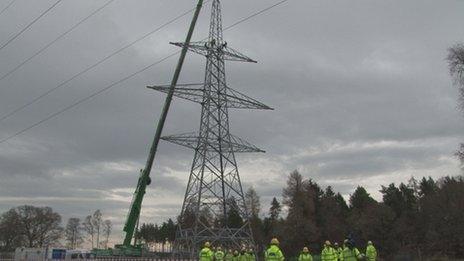Redundant electricity towers being removed from Cairngorms
- Published
The first pylon crashes to the ground near Aviemore
Work to remove the last of about 300 redundant electricity transmission towers from a national park, as part of a £600m energy project, has begun.
The towers are being taken down in the Cairngorms National Park as part of the upgrading of the 137-mile (220km) Beauly to Denny power line.
The final phase of removing 84 towers is between Aviemore and Kingussie.
New towers were built in parts of the park for the Beauly to Denny project, but fewer towers than previously.
Between Aviemore and Kingussie, new underground electricity distribution cables have been installed to replace the overhead cables.
The removal of all the old towers, which include some on the Beauly-Denny route and others that carried electricity to communities, will result in more than 1,500 tonnes of steel for recycling.
The redundant towers will not be replaced with new pylons.
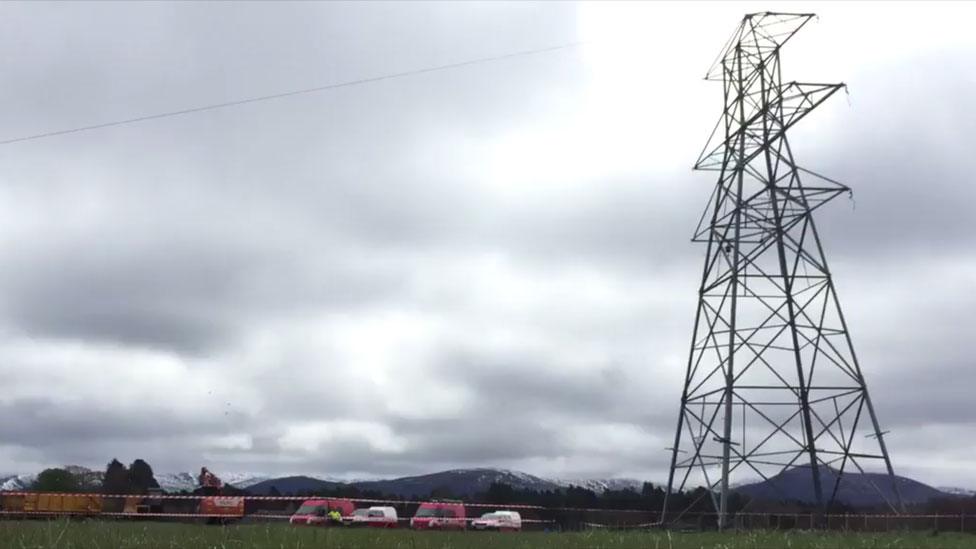

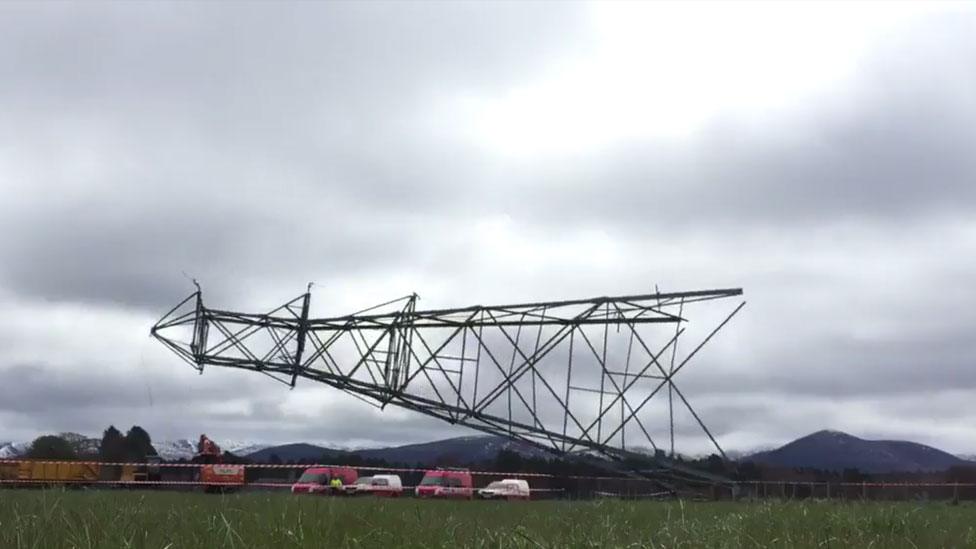
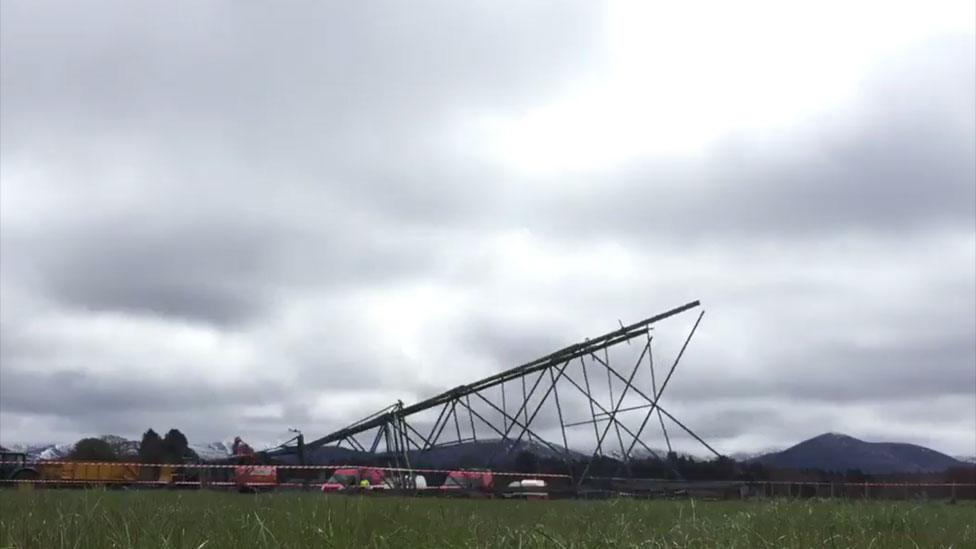
The initial phase of overhead line tower removal work in the Cairngorms National Park was done east of Boat of Garten and across the Lecht to Cairnmore in Aberdeenshire during 2011 and 2012.
Work to remove transmission towers between Boat of Garten and Kingussie began earlier this year, with the final section from Aviemore to Kingussie expected to be completed in July this year.

What is the Beauly-Denny powerline?
The line is 137 miles long and supported by 615 pylons which run through some of the country's most inaccessible terrain.
The project supported more than 2,000 jobs over seven years.
But it attracted about 20,000 objections.
It is the longest transmission line to be built in the UK in recent times.
The upgrade was done to handle power from renewable energy projects.
Its highest point is the Corrieyairack Pass at 2,526ft.
Workers received mountain survival training to help them cope with harsh winter conditions.
It took more than five years to build.

Energy firm SSE led the project upgrading the Beauly-Denny line, allowing it to triple the capacity of the old line to 400,000 volts.
The new line, which became operational in November 2015, involved the construction of 600 new towers - a reduction of 200 on the previous number.
However, some towers are taller and reach heights of 65m (213ft).
Opponents to the upgrade complained that the new towers would spoil mountain landscapes.
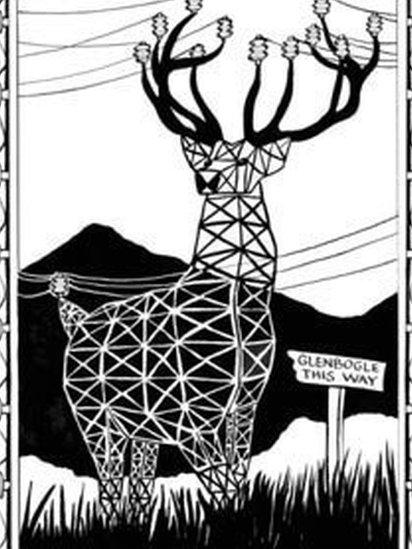
Campaign groups opposed the project
Several groups were set up to fight the project, with many calling for the power cables to be buried underground for longer stretches.
These included Cairngorms Revolt Against Pylons, Highlands Before Pylons and Stirling Before Pylons.
Another organisation, the Beauly-Denny Landscape Group, comprised the Association for the Protection of Rural Scotland, John Muir Trust, Mountaineering Council of Scotland, National Trust for Scotland, Ramblers Scotland and the Scottish Wild Land Group.
Helen McDade, of the John Muir Trust, argued that the scale of the completed project represented more than an upgrade of an existing power line.
She said: "I think few people would claim now that it was just an upgrade.
"They can see a major impact, particularly from the tracks that were built to put these major pylons in."
'A jigsaw'
One of the reasons for the upgrade of the line was to enable greater amounts of power generated by wind farms to be transmitted.
Former chairman of SSE and current chairman of the Green Investment Bank, Lord Smith of Kelvin, said it was an important project.
He said: "When I look back at my time with SSE, in what is an ever changing energy sector, Beauly-Denny was one of the few constants - not least because of the long-term nature of the project and the lengthy planning process it went through.
"Following its successful energisation back in November 2015, it is important to recognise the enormous contribution the line has made to Scotland's thriving renewable energy sector.
"It was the first, vital piece of a jigsaw that is still coming together today, unlocking Scotland's vast renewable potential that has recently seen the installed capacity of renewables supported by the north of Scotland transmission network rise to over 4,500 megawatts of generation capacity.
"That's a truly remarkable achievement which is contributing in no small part to national and local climate change and renewable energy targets, as well as helping to maintain security of electricity supply."
- Published21 December 2015

- Published25 July 2013
